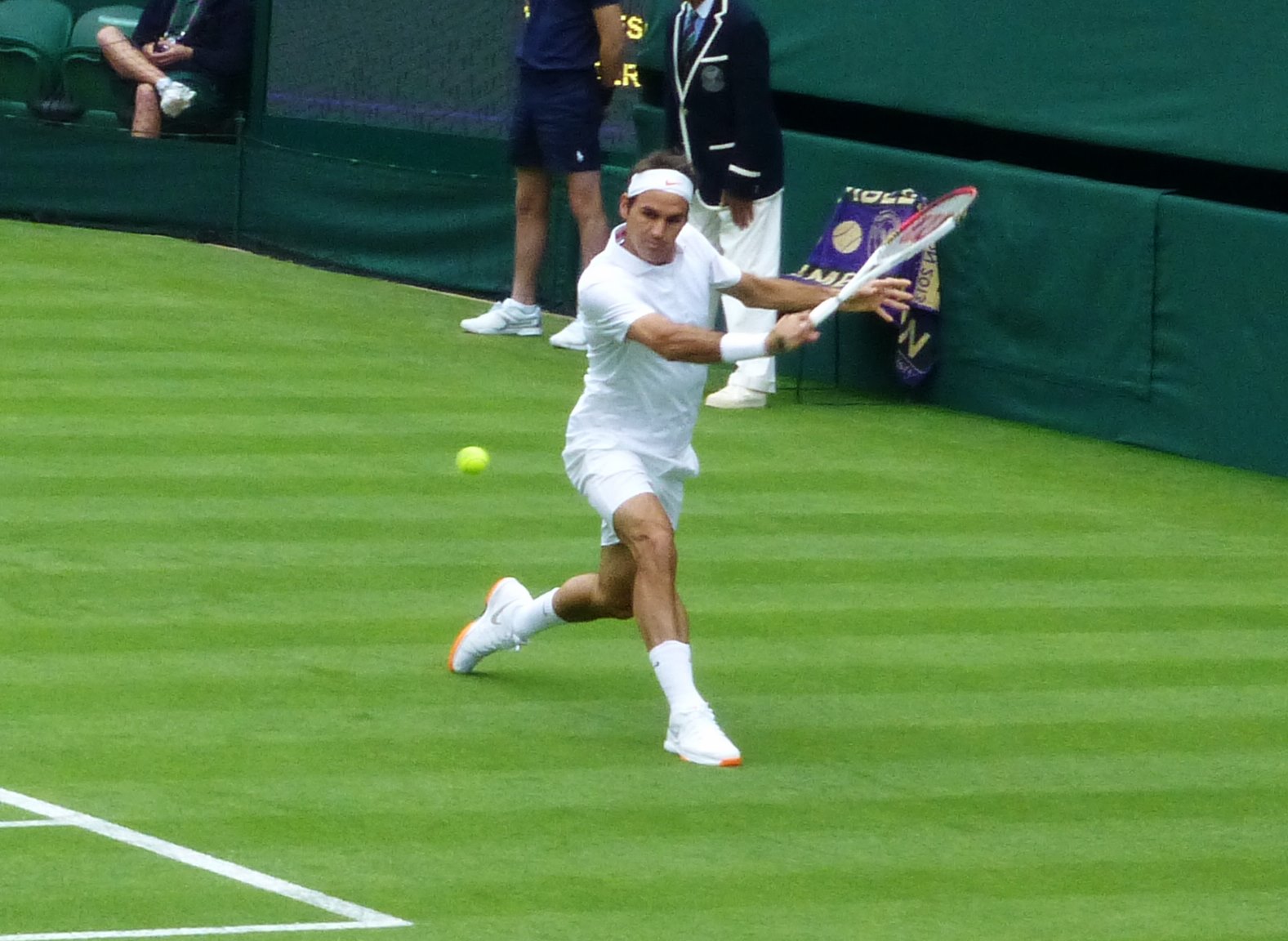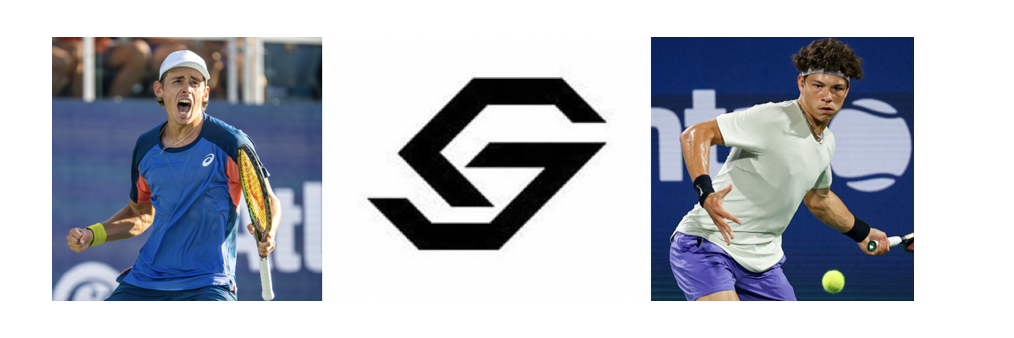
As I watched the first set of Roger Federer’s match against Jan-Lennard Struff in the Wimbledon third round, my mind began to wander, as it is wont to do when Federer is manhandling an opponent at Wimbledon. The same thing happens when Nadal is manhandling people at the French. It is not, of course, boredom–Roger and Rafa are not boring players–but the inevitability of the result cannot be argued. And without some chance of the unexpected who could blame me for introducing some variables, imagined though they may be? Put succinctly, I play the “what if” game.
I start with a possible (though unlikely) scenario. “What if Federer misses the next smash Nole-style?” or “What if somebody hacks the scoreboard, and instead of reporting the score, it reads ‘Gina, you’re a filthy, rotten cheater. It’s over.'” or ‘”What if [chair umpire] Jake Garner gets the hiccups RREEALLLY loudly in the middle of the match?” Then I let the scene unfold of its own accord. If I’m feeling extra feisty, I might imagine a scene in which Garner gets to say, “Don’t tell me to be quiet! I’ll hiccup when I want to hiccup!” (original “Don’t tell me to be quiet!” exchange below. It’s a beauty.)
https://www.youtube.com/watch?v=koTTY3QuLcQ
In this case, my “what if” involved a rather hilarious Federer wardrobe malfunction, no doubt inspired by his new Uniqlo kit, which still feels weird to me. I guess I miss the swoosh. Just as his imaginary seam started to split, the set was over. 6-3 Federer. One break of serve, but really it wasn’t even that close. Yet when ESPN flashed the statistics, they looked very even (except “total points won,” which was skewed rather heavily towards Federer). It reminded me of something I have long believed, which is that the most important statistic in tennis is the forced error–and it’s not even calculated.
The forced error total is the collection of points a player extracts from his opponent by making him miss. If Federer hits a blistering forehand crosscourt that Struff barely gets his racket on, it’s a point for Federer, but not a winner. Because of the “just barely gets his racket on it” part. That point, though purely offensive from Fed, is technically a forced error.
It’s a funny little term. Though the word “forced” implies a kind of aggression on the part of the winner of the point, the “error” is ultimately the responsibility of the point loser. Tell that to Struff, though, who was clearly thinking whatever the German version of “Oh, crap, not again” is. When he loses that point, it’s because Federer MADE him lose it, not because he has suddenly channeled Bernard Tomic.
Perhaps the most extreme example of the importance of the forced error is Rafael Nadal on a clay court. His entire game is constructed to efficiently force opponents to make errors. You know the drill. His heavy topspin kicks up high on his opponent to ’round about shoulder level. It’s quite literally designed to inflict pain, induce fatigue…and yes: extract errors. It’s not that Nadal doesn’t hit clean winners on the dirt. He does…and better than any other human in history ever has. But his 11 French Open titles have come on the back of the forced error, not his handful of winners each match.
In the John McEnroe days of serve and volley tennis, players chasing down volleys were less likely to be able to get a racket on the ball. But modern tennis, which demands better fitness and a lot of scurrying around the baseline, sees far fewer clean winners. Thus, even a game like Federer’s, which is widely considered to be the very height of aggression and offense owes its success to the Maestro’s ability to bully people around the baseline and force them to take uncomfortable swipes at the ball.
Like just about everything else they have done and continue to do–Roger and Rafa are the world’s best at forcing errors. Their combined 37 Grand Slam titles attest to that.
[polldaddy poll=10050084]
[polldaddy poll=10049484]


Thanks, Cheryl! Really enjoyed that.
fun read
and i agree, too
The crowd are behaving really badly to Djokovic. They can support Edmund but show respect for his opponent as well.
Yes, the crowd was poorly behaved. And Jake Garner made a complete hash of that match. Yikes.
I especially like the part about hacking the score-board, now, that would be fun. imagine if all of a sudden, even unintentionally, whatever’s on someone’s phone is shown on the board, lol
Btw,
There’s the ‘forced error’ (described in the article)
Then there’s the ‘unforced error’
and then there’s Kyrgios, Tomic, Gulbis and the likes who tank on purpose.. is that a sub-category of the ‘unforced error’ or the ‘forced error’?
Yup. I believe the ATP calls it “Conduct Contrary to the Integrity of the Game”. Otherwise known as being a jackass.
lol
A classic ‘laugh out loud’ piece from Cheryl and so true. Loved it.
she’s back!
three cheers
pre-GOAT:
https://twitter.com/usopen/status/1019568179247534080
Just look at how young he was. I remember him at that Open.
Roger’s aggressive play draws forced errors from opponents. Roger’s fluid playing style, however, doesn’t appeal to many who like to see fist pumps, emotions, and theatrics after every point. Just enjoy his amazing tennis because it’ll soon end, as all good things must… http://www.138mph.com/tennis-the-rumors-about-roger-federers-demise-as-the-dominant-force-in-tennis-are-untimely-and-highly-exaggerated/
Hard to be “dominant” cherry picking grass and select hard courts.
#Stickaforkinhimhesdone.
#GloryDays